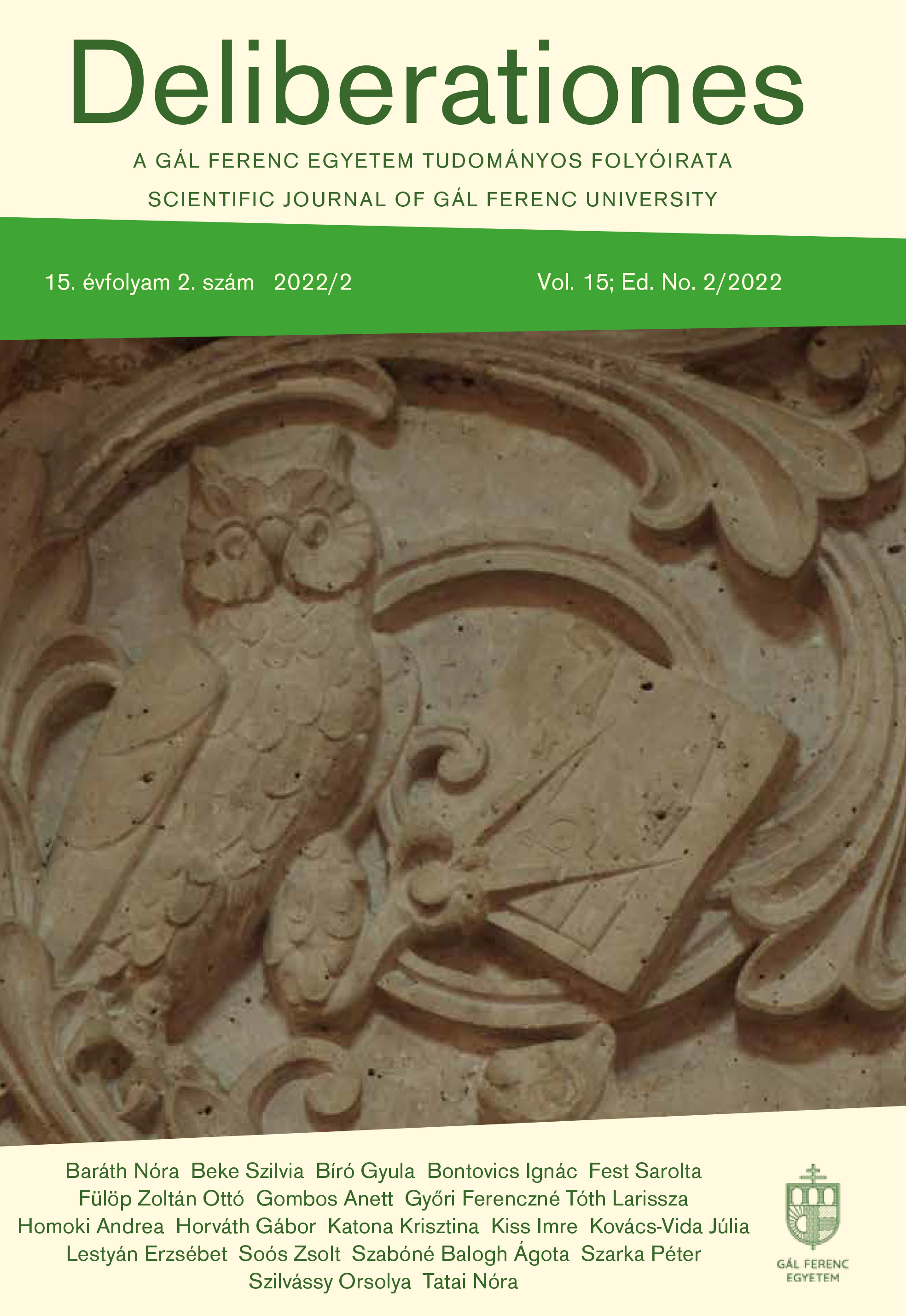Abstract
Adequate rest and sleep are essential for children's healthy development, and while sleep is both a need and a habit, falling asleep is not always so straightforward and easy procedure. The literature offers several strategies for making a child fall asleep, but the fact that lullabies have played an important role in different cultures over the centuries, is only peripherally evident. However, this particular genre of childhood poetry, which belongs to the group of lyrical play songs, is an "undeservedly neglected genre" not only in terms of methodological issues related to the education of children, but also in terms of ethnographic and literary studies, as Imre Katona has repeatedly pointed out.
References
Burány, B. (1972, jún.-szept. 11-12. sz). A mi utcánk játékai. Hung. Int. Tud. Közleményei. Újvidék, Iv. évf.,.: 147-216. https://adt.arcanum.com/hu/view/Letunk_1996/ (Letöltve: 2022. 11. 11.)
Cirelli, L. K., Jurewicz, Z. B., Trehub, S. E. (2020). Effects of Maternal Singing Style on Mother-Infant Arousal and Behavior https://pubmed.ncbi.nlm.nih.gov/30912725/ (Letöltve: 2022. 11. 11.)
Dr. Faragó József (1976): Magyardécsei bölcsődalok. Népismereti Dolgozatok https://adatbank.ro/html/alcim_pdf9754.pdf (Letöltve: 2022. 11. 11.)
Falvay, K. (1990). Ritmikus mozgás – énekes játék. Budapest. OPI
García Lorca, F. A bölcsődalok. In Federico García Lorca válogatott művei, Európa könyvkiadó. 1963 738-754.
Gazda, K. (1988). Gyermekvilág Esztelneken, Bukarest, Kriterion Könyvkiadó,
https://adatbank.ro/html/cim_pdf1002.pdf (Letöltve: 2022. 11. 11.)
Katona I.; Szendrei J. (1977): Bölcsődal. In Ortutay Gy. (főszerk.): Magyar Néprajzi Lexikon I. Budapest: Akadémiai. 365. https://mek.oszk.hu/02100/02115/html/1-960.html (Letöltve: 2022. 11. 11.)
Katona I. (1970) Altatódal szócikk In Világirodalmi Lexikon. Akadémiai Kiadó. Budapest
Magyar gyermekjáték-gyűjtemény (1891). Dr. Kiss Áron (Szerk.). Budapest. https://mek.oszk.hu/10800/10818/10818.pdf (Letöltve: 2022. 11. 11.)
Magyar népdalok. (2000). Ortutay Gyula (Szerk.). Katona Imre (Vál.). Budapest. Neumann Kht. https://mek.oszk.hu/06200/06234/html/ (Letöltve: 2022. 11. 11.)
Magyar néprajz nyolc kötetben (1988-2002). V. kötet Magyar népköltészet Vargyas Lajos (Főszerk.). Akadémiai Kiadó, Budapest http://vmek.oszk.hu/02100/02152/html/index.html (Letöltve: 2022. 11. 11.)
Morales, H. R. (2020) What the lullabies we sing to our children reveal about us https://www.nationalgeographic.com/magazine/article/what-the-lullabies-we-sing-to-our-children-reveal-about-us-feature (Letöltve: 2022. 11. 11.)
Perry, N. (2013). „The Universal Language of Lullabies,” BBC World Service, BBC News Magazine Online https://www.bbc.com/news/magazine-21035103 (Letöltve: 2022. 11. 11.)
Mehr S. H. et al. (2019). Universality and diversity in human song Science Journals — AAAS (mehr.nz) (Letöltve: 2022. 11. 11.)
Scheuring N. dr., Danis I. dr., Papp E. dr.,Németh T. dr., Szabó L. dr. (2015). Alvási problémák csecsemő- és kisgyermekkorban II.: Altatási és elalvási nehézségek In GYERMEKGYÓGYÁSZAT; 66. évf. 4. sz. gygy-2015-4x.vp (heimpalkorhaz.hu) (Letöltve: 2022. 11. 11.)
Vekerdy, T. (1994). Fülszöveg Csíjja, Bújja Baba... - Magyar Népi Altatódalok Kiss Ferenc feldolgozásában. MC. Etnofon, Budapest.
http://album.hagyomanyokhaza.hu/album/album_show.php?id=471 (Letöltve: 2022. 11. 11.)
